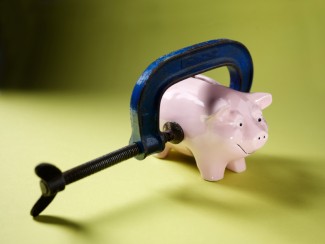Energy efficiency retrofits for entire homes and buildings can substantially reduce energy bills for low-income and multifamily residents. These upgrades can also keep families in their homes by helping them avoid eviction, get through storms, and live longer and healthier lives.
For several years, Maryland’s Department of Housing and Community Development (DHCD) has delivered programs that improve the energy efficiency of homes for limited-income residents and keep rents affordable. Our new report chronicles the development, achievements, and challenges of these programs. This report comes at a critical time. The Maryland Public Service Commission (PSC) is currently reviewing DHCD’s proposed program plan for the next three years.
To inform our research, we collected information from key Maryland stakeholders, reviewed program filings, and discussed program operations with energy efficiency professionals in Maryland and around the country. We also include lessons learned from our past research of low-income and multifamily programs.
Maryland’s Commitment to Saving Energy for Low-Income Families
After Maryland’s state legislature passed the EmPOWER Maryland Energy Efficiency Act in 2008, the Maryland PSC directed the state’s utility energy efficiency programs to focus on serving limited-income residents. In 2012, the PSC transferred administration of these programs to DHCD, citing its success in delivering weatherization and affordable housing programs. Since that time, DHCD has overseen two EmPOWER programs — the Low Income Energy Efficiency Program (LIEEP) for single-family homes and the Multifamily Energy Efficiency and Housing Affordability (MEEHA) program that targets affordable apartment buildings.
Achievements and Opportunities for Improved Program Performance
Throughout the last five years, households participating in LIEEP and MEEHA have seen significant energy savings because of DHCD’s commitment to comprehensive whole-home and whole-building upgrades. Still, each program’s participation numbers can increase.
Customer participation in LIEEP has been inconsistent over the past several years. To address this, we make several recommendations:
- Increase spending or allow more flexibility in addressing home health and safety issues
- Increase coordination with community groups
- Strengthen engagement with owners of rental properties
MEEHA program participation is low compared to similar multifamily programs described in our recent low-income programs assessment. Energy savings per participant have also been declining over the past several years. Our report highlights several ways these issues can be addressed:
- Deliver program incentives to master-metered multifamily buildings
- Provide more support for multifamily applicants who are planning an energy efficiency project
- Provide new training opportunities for multifamily contractors
Lastly, our report discusses several changes that can pave the way for future success in both programs. DHCD has very limited funding to improve the efficiency of natural gas equipment, but natural gas utilities, with support from the PSC, can direct greater resources to DHCD’s programs.
Program staff can also use new program performance metrics and information from third-party evaluations to guide future program decisions. With such new data, the PSC will be able to set informed energy savings and spending goals for DHCD’s programs.
Lessons for All
According to a recent National Low Income Housing Coalition study, Maryland is the fourth most-expensive state in the country for rent and utilities. Many of the state’s low-income families struggle to pay their bills and need energy efficiency programs like those administered through DHCD. Maryland ranks 10th in this year’s State Energy Efficiency Scorecard, and it is well positioned to decrease the energy burdens faced by so many low-income residents. However, these challenges are not unique to Maryland. Rent and energy costs are rising across the nation, while those with the lowest incomes see little or no increase in their pay. Our report offers valuable lessons for low-income program administrators and regulators in any state.



